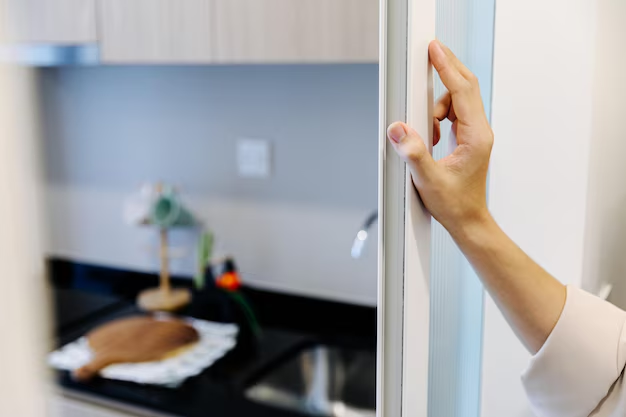How to Expertly Adjust Your Samsung Refrigerator Temperature Settings
In today's fast-paced world, refrigerators are not just appliances—they're pillars of our kitchen ecosystem. Among the leading options, Samsung refrigerators are renowned for their advanced technology and stylish designs. Yet, with great technology often comes the need for precise control. One common question that arises among users is how to adjust Samsung refrigerator temperature settings. Unlocking this knowledge can ensure optimal food preservation and energy efficiency, enhancing your kitchen experience.
Understanding Samsung Refrigerator Temperature Settings
Before diving into adjustments, let’s take a moment to understand the basics of refrigerator temperature settings and why they matter. Proper temperature settings maintain food freshness, prevent spoilage, and save energy. Generally, the ideal refrigerator temperature is around 37°F (3°C), while freezers should be set to 0°F (-18°C).
Why Adjusting Temperature is Crucial
- Food Safety: Improper temperatures can lead to bacterial growth, posing health risks.
- Energy Efficiency: Correct settings improve energy usage, lowering utility bills.
- Prolong Shelf Life: Optimal temperatures extend the life of perishable items, reducing waste.
Features of Samsung Refrigerators
Samsung refrigerators often come with a range of features that facilitate temperature control:
- Digital Displays: Easy-to-read interfaces for monitoring and adjusting settings.
- Smart Technology: Connectivity options for remote management via smartphone apps.
- Dual Cooling Systems: Separate cooling actions for freezer and fridge compartments, which allows for independent adjustments.
Setting and Adjusting Your Samsung Refrigerator Temperature
Whether you're adjusting for the first time or recalibrating, here’s how to fine-tune your Samsung refrigerator’s temperature settings.
Accessing the Control Panel
Most Samsung refrigerators come equipped with a digital control panel, usually located inside the fridge or on the exterior door.
- Locate the Panel: Find the digital panel. It typically features touch-sensitive buttons or a push-button system.
- Understand the Display: Familiarize yourself with displayed options. Look for "Fridge" and "Freezer" symbols, temperature readings, and adjust buttons.
Adjusting the Temperature
Once you know your way around the control panel, you can adjust settings with ease.
- Press the "Fridge" or "Freezer" Button: Press this button to select which compartment you want to adjust.
- Set the Desired Temperature: Use the arrow keys or plus/minus buttons to increase or decrease the temperature.
- Confirm and Wait: After setting the desired temperature, allow several hours for the refrigerator to adjust and stabilize.
Optimal Temperature Settings
- Refrigerator Compartment: Aim for a temperature of 37°F (3°C).
- Freezer Compartment: Set it to 0°F (-18°C).
Tips for Keeping Your Samsung Refrigerator at the Right Temperature
Managing your fridge effectively extends beyond initial temperature settings. Here are some practical tips for maintaining optimal conditions:
Ensure Even Cooling
- Don’t Overload: An overcrowded fridge impedes air circulation, affecting temperature consistency.
- Organize Strategically: Place items in a layout that allows for air flow. Avoid blocking air vents.
Regular Maintenance
- Clean the Coils: Dusty coils can compromise the cooling efficiency. Consider cleaning them every six months.
- Seal Inspection: Ensure door seals are intact. Cracks or gaps can let out cold air, destabilizing temperatures.
Utilize Smart Features
If your Samsung fridge is equipped with smart technology, harness these features:
- App Control: Many Samsung models allow you to adjust temperatures remotely via an app.
- Alerts: Use alert features to notify you of temperature fluctuations or when doors are left open.
Seasonal Adjustments
- During summer, consider setting the fridge slightly cooler to compensate for warmer ambient temperatures.
- In winter, ensure settings consider household heating factors.
Common Temperature-Related Issues and Solutions
Even with advanced technology, users may encounter issues. Here’s a look at common problems and how to navigate them.
Temperature Fluctuations
- Frequent Opening: Habitual door opening may cause temporary spikes. Try minimizing frequency or duration.
- External Heat Sources: If the fridge is near a heat source (oven, sunlight), consider moving it if possible.
Ineffective Cooling
- Check Vents and Coils: Ensure nothing blocks air vents and clean coils if necessary.
- Temperature Sensor Malfunction: If settings aren’t reflecting in compartment temperatures, consider consulting technical support.
Summary of Key Temperature Tips 🌡️
Here’s a concise list to keep your Samsung refrigerator at optimal performance:
- 🌡️ Optimal Settings: 37°F for the fridge, 0°F for the freezer.
- 🌀 Even Circulation: Keep vents unobstructed. Avoid overloading.
- 🧹 Regular Maintenance: Clean coils and inspect door seals.
- 📱 Smart Features: Utilize apps for remote monitoring.
- 🛠️ Troubleshooting: Address fluctuation by minimizing door open time and checking external heat impacts.
Final Thoughts on Mastering Samsung Refrigerator Temperature Adjustments
Striking the perfect balance of temperature settings in your Samsung refrigerator can significantly impact food quality, safety, and energy consumption. By understanding and applying the right adjustments, conducting routine maintenance, and embracing technology, you can ensure your refrigerator remains a reliable partner in your kitchen. Remember, a well-maintained refrigerator isn't just about storing food; it's about enhancing your overall culinary experience with efficiency and safety at the forefront.
